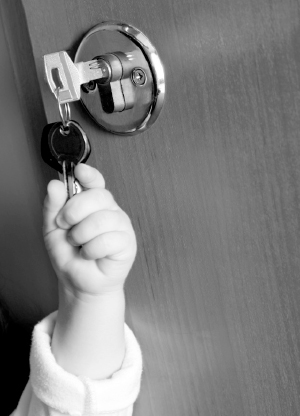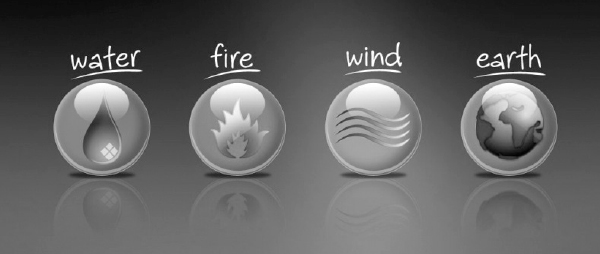A teacher with thirty students or a parent with six-seven children and more soon realizes that the educational approach that worked with one child won’t necessarily work with another child. Each child needs to be regarded as an individual.
 Not long ago, a student from another class came over to me and told me what was on his mind. He said that for a long time he felt that nobody cared about him. He was overwrought and told me that a few hours earlier he had conducted an experiment. He left the class and nobody bothered to look for him during his hours of absence.
Not long ago, a student from another class came over to me and told me what was on his mind. He said that for a long time he felt that nobody cared about him. He was overwrought and told me that a few hours earlier he had conducted an experiment. He left the class and nobody bothered to look for him during his hours of absence.
“Where were you all that time?” I asked. He told me about a place where he spends hours every day, the carpentry teacher’s room. When he mentioned the carpentry teacher his eyes lit up. When he described the projects he made and wanted to show them to me, I noticed tears in his eyes. “If only there were more arts and crafts classes in school. I love them,” he told me enthusiastically.
Handicrafts are this boy’s strong point. Whenever there is something to do with crafts, he’s the first to volunteer. He made a nice wooden pushka and built beautiful floats that were used in the Lag B’Omer parade. He has refurbished items that seemed beyond salvage, but in the classroom it is hard for him. The conventional approach in yeshiva is to sit in one place for many hours, but this bores him and he loses interest quickly.
There are many students like him, some of them are quiet and the problem is greater with them. On a positive note, in recent years the spotlight has been directed at these students and yeshiva staffs are investing a lot of work to include them in the classroom. If in the past, the teacher addressed the bulk of the class and the other students would make tea for the teachers or become errand boys, today the way of thinking is different and no student is given up on.
THERE IS NO CARBON COPY IN EDUCATION
The Torah and our sages often compare human beings to trees. If you think about it, it’s amazing. Just as with human beings, in the plant world no two plants are identical. One plant needs more water and another manages with little, one needs more exposure to the sun and the other does better in the shade. One needs other plants around it to support its growth while another’s growth will be stunted by weeds growing nearby.
There are plants whose peak season is the summer while other plants need cool, rainy weather. Young saplings need great care. Any strong wind or too much or too little water can adversely affect their growth. The same is true for young children. If they grow up in an environment which disregards their needs, it will negatively affect their development.
There are children who are more sensitive and some less, those with a temper and those who are easygoing, those who are adventurous and those who are more cautious, energetic ones and lazy ones, intellectual and emotional, those who need a lot of encouragement and those who don’t like that, those who need peace and quiet and those who like a commotion. The same is true for talents; some enjoy music and others like working with their hands. Some are more spiritually inclined and others are more down to earth. Nobody is alike and within every talent there are manifold differences between one and another. So too for brothers, no child is identical to his sibling.
We can see this in a classroom or within a family and we need to pay attention to it. In the non-Jewish world, the understanding that every child has his unique way of learning and understanding really took off in the past twenty to thirty years. The awareness that in a heterogeneous classroom there are differences not only in learning styles but also in intellectual abilities is something everybody recognizes today.
As believing Jews, we know that chinuch can’t be based on one approach. Shlomo HaMelech wrote in Mishlei, “Chanoch l’naar al pi darko,” which means that every child has his way of understanding. Chazal emphasized that just as people’s faces are different, so too is their way of thinking. The educational perspective that sees the power of the individual is sourced in Chazal thousands of years ago.
When we recognize that every child has unique abilities and intelligence, we won’t use a uniform education approach for all our students and children. Each child is a world unto himself and every child needs us to treat him as an individual.
A teacher with thirty students or a parent with six-seven children and more soon realizes that the educational approach that worked with one child won’t necessarily work with another child. Each child needs to be regarded as an individual, with an understanding of his inner world and the challenges he has to deal with.
The same holds true for parents. This is why, in the HaYom Yom, the Rebbe quotes the Rebbe Rashab (HaYom Yom 22 Teves) as saying that it is an absolute duty for every person to spend a half hour every day thinking about the Torah education of children, and to do everything in his power – and beyond his power – to inspire children to follow the path along which they are being guided, for chinuch is something that requires a lot of thought.
R’ Chadakov, a master educator, once said that a teacher should capitalize on a student’s talent and allow him to develop it for good things.
An artistic student, for example, should be encouraged to develop his or her talents in a kosher way. Why not suggest they sit in a park and draw the wonders of creation?
Likewise, a student who finds it difficult to concentrate on his learning, needs to find ways to use his talents for other things. For example, a child who made something out of wood to decorate his room, his Beis Chabad, will be pleased with his work and this will increase his yiras Shamayim and his love for holy things and mitzvos. The other students will learn “don’t be scornful of anything,” when they see that each student has something special that he excels in.

FOUR ELEMENTS IN DIFFERENT PROPORTIONS
Back to the example we started with. The Torah and our sages often compare a Jew’s life to a tree. In this week’s Parsha it says, “ki ha’adam eitz ha’sadeh” (for is man a tree of the field?). In Yeshaya it says, “k’yimei ha’eitz yimei ami” (as the days of the tree are the days of my people) and in Yirmiyahu it says, “k’eitz shasul al palgai mayim” (as a tree planted on streams of water), and those are only three sources out of many others comparing man to a tree.
The question is, why is a Jew compared to a tree?
A tree needs four elements to exist: earth, water, wind, and fire. Similarly, people need the same four elements.
Earth: The sapling needs to be planted firmly in the earth. The earth provides it with nourishment to grow and room to develop its roots. This is true for a child too. Good chinuch is when a child acquires firm roots.
Water: Rainwater is absorbed in the earth and through the root system it reaches the trunk of the tree, its branches and leaves. Without water, a tree dries up. Torah is compared to water, as it says, “My word drips like dew.” Both rain and Torah descend from heaven and slake the thirsty. We need to educate not only for material success but also to water the child with Jewish ethics and values.
Wind: A tree needs air to exist. Air contains oxygen which the tree needs as well as carbon dioxide. In an atmosphere which is not balanced, the tree will choke and die. We need to train a child in matters of the spirit so that his connection to himself and the holy Torah will be strong and deep and not superficial.
Fire: A tree needs the light of the sun to exist. The energy of the sun is absorbed and causes a chemical reaction which is essential for the growth of the tree. A child also needs fire, warmth, lots of love, caring, inclusion and attention.
Every child needs each of the four elements but some children need one of the four more urgently. There are more spiritually inclined children, there are children who need more love, and the teacher or parent needs to be sensitive to the needs of the child and provide them accordingly.
There are teachers who consider the benefit of the group over the needs of the individual. If one or two children disturb, they are removed because the welfare of the rest of the class comes first. This is wrong because when a child disturbs he has a certain need. If we identify it and fill it, his behavior will change. It is like a hungry or thirsty child who is uncomfortable and can’t learn.
A teacher needs to love his students like they are his own children. When you love someone, you are not willing to give up on them. We as Jews and Chassidim don’t have the option of giving up on anyone.
Nachas from children is the greatest desire a parent has. Hashem set it up so that anything worthwhile requires effort, building, growing. Wild grass grows without care but wheat and barley and other produce that people eat require sowing, watering, fertilizing, hoeing, etc. The same is true for children. You want nachas? Put in the work!
In order to tip the world to the side of merit and hasten the hisgalus, just one deed can do it and who knows whether the good deed of that child will be the one to accomplish it.